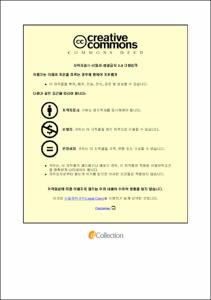관절경하 내측 반월상 연골판 부분 절제술 후 관절의 장기 생존율 예측 모델
- Alternative Title
- Development of a predictive scoring system for the long term joint survivorship following arthroscopic partial medial meniscectomy
- Abstract
- Background: The approach to treating degenerative medial meniscal tears (DMTs) has transitioned from a strategy that prioritized meniscectomy to one that emphasizes meniscus preservation whenever possible. However, not all patients respond to conservative treatment, and the symptom-relieving effect of arthroscopic partial medial meniscectomy (APM) is widely accepted in orthopaedic practice. Establishing appropriate surgical indications requires a prognostic prediction model incorporating numerous clinicoradiologic factors that interact with each other. Purpose/Hypothesis: This study aimed to develop a predictive scoring system for the long- term joint survivorship following APM using a machine learning technique. It was hypothesized that selected preoperative factors could predict lower survival rates following APM when treating DMTs. Study Design: Cohort study; Level of evidence, 3. Methods: Patients who underwent APM for DMTs during 1999–2010 were retrospectively reviewed. The following inclusion criteria were applied: (1) diagnosis of DMTs on preoperative magnetic resonance imaging (MRI) scans, (2) no definite history of trauma, (3) follow-up duration >5 years. Joint survival rates were assessed with the endpoint being defined as conversion to arthroplasty (or realignment osteotomy) or progression to Kellgren-Lawrence grade 4. Investigated predictive factors included demographics, anatomic tibiofemoral angle (aTFA), posterior tibial slope (PTS), cartilage status of the medial and lateral compartments, medial meniscus tear pattern, preoperative subchondral bone marrow lesion (BML), and subchondral insufficiency fracture of the knee (SIFK) lesion. A scoring system was developed to stratify the survival rate following APM. Least absolute shrinkage and selection operator (LASSO)-based Cox regression was used to select the predictive factors of the scoring system, and assigned scores were determined based on the hazard ratio of each factor. Calibration plot was generated to compare the model-based predicted survival rates with the observed survival rates. Results: A total of 633 knees were included, with a mean follow-up duration of 114.6 ± 47.4 months (range, 60–245 months). During that period, 151 cases experienced failure. The 10- year joint survival rate was 82.3% (95% confidence intervals [CI] 79.0–85.6%). After selection by LASSO-based Cox regression, the following factors (assigned scores) were incorporated into a scoring system: age ≥60 years (2 points), aTFA <2° (2 points), cartilage status of the medial compartment (2 points for grade 2 and 5 points for grade 3), cartilage status of the lateral compartment (1 point for grade 2 and 3 points for grade 3), preoperative subchondral BML (1 point for grade 1, 2 points for grade 2, and 3 points for grade 3), and SIFK lesion (2 points). The joint survivorship was assessed by dividing the total scores into five groups, and for scores of ≥9 points, the 10-year joint survival rate was 51.5% (95% CI, 40.7–61.2%). When comparing the predicted survival rates and observed survival rates in each of the five groups, the calibration plots generally demonstrated a linear pattern. Clinical outcomes were evaluated using the Lysholm scores. Conclusion: The long-term joint survivorship following APM can be reliably predicted using the developed scoring system. The top scoring factor was grade 3 medial compartment cartilage status followed by grade 3 subchondral BML and grade 3 lateral compartment cartilage status. A total score of 9 points or higher resulted in a nearly 50% reduction in the 10-year joint survival rate. This scoring system provides a basis for an individual risk calculator to assess prognosis and determine indications for APM when treating DMTs. Key terms: medial meniscus; degenerative tear; meniscectomy; machine learning
- Issued Date
- 2024
- Awarded Date
- 2024-08
- Type
- Dissertation
- Alternative Author(s)
- Ju-Ho Song
- Affiliation
- 울산대학교
- Department
- 일반대학원 의학과의학전공
- Advisor
- 김종민
- Degree
- Doctor
- Publisher
- 울산대학교 일반대학원 의학과의학전공
- Language
- eng
- Rights
- 울산대학교 논문은 저작권에 의해 보호받습니다.
- Appears in Collections:
- Medicine > 2. Theses (Ph.D)
- 파일 목록
-
-
Download
 200000812424.pdf
기타 데이터 / 1.3 MB / Adobe PDF
200000812424.pdf
기타 데이터 / 1.3 MB / Adobe PDF
-
Items in Repository are protected by copyright, with all rights reserved, unless otherwise indicated.